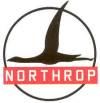
XP-56 Black Bullet
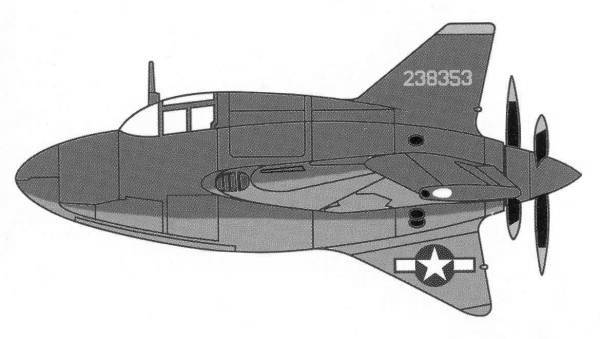
The XP-56 came about as the result of a 1939 Army Air Corps proposal R-40C calling for a new fighter aircraft capable of flying at 525 mph at 15,000 feet. The Northrup model N2B was one of three aircraft designs selected for further study, the other two being the Vultee XP-54 and the Curtiss XP-55. The XP-56, nicknamed the "Black Bullet", was powered by a 2000 hp Pratt and Whitney R-2800-9 radial engine. The aft mounted engine turned two Curtiss Electric counter-rotating propellers. The tailless Xp-56 was built from welded magnesium sections. Northrup built two prototypes. The first flew on September 6, 1943. The aircraft made three flights before its nose wheel collapsed during a high speed ground run after landing. The aircraft was later scrapped. The second prototype incorporated several changes from the first aircraft. The vertical fin area was increased to improve in-flight stability and blown-air jets were mounted in the wingtips for directional steering. The first flight of the second XP_56 took place on March 23, 1944. Flight stability problems continued to plague the aircraft and it was unable to perform combat maneuvers. It was also nose heavy which resulted in take off difficulties and was under powered. The availability of existing fighters and the imminent arrival of jet aircraft resulted in cancellation of the project in December of 1945. This aircraft is currently stored by the National Air and Space Museum for future restoration.
The Kit
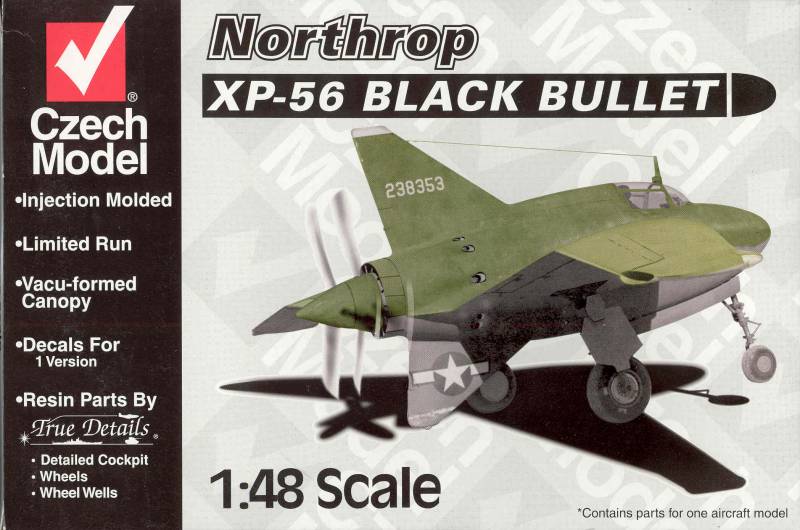
The Czech Model kit comes in an unhandy end flap open box with so-so artwork on the front. The back of the box has a color profile and lists the aircrafts specifications. Inside the box are two sealed bags, one with injection molded parts and one with cast resin parts. The clear parts were loose in the box. The injection molded parts are supplied on three sprues molded in gray and feature recessed panel lines. These were very light and shallow but continuous. The finish is glossy and I found no sink marks or ejector pin marks that would show when completed. One wheel hub had a surface defect that needs to be filled.All parts showed some flash and some of the small parts were heavily flashed. The control surfaces are all fixed and to my mind could stand to be more deeply engraved but that is not difficult to fix. This is a typical short run kit with no alignment pins and rather heavy sprue attachment points so care will need to be taken removing parts from the sprues. Altogether there are 31 injection molded parts. See photos below
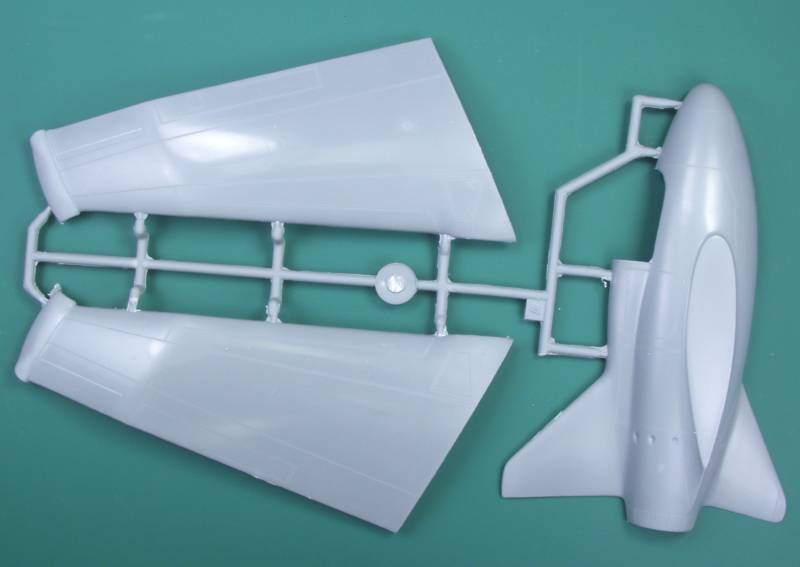
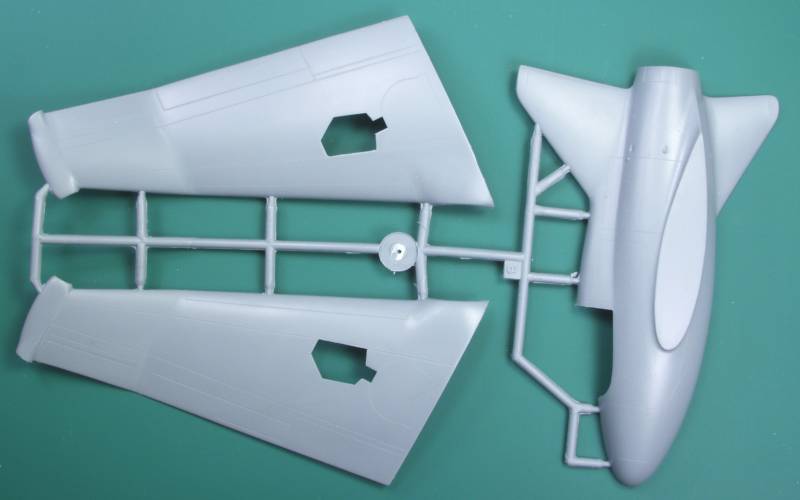
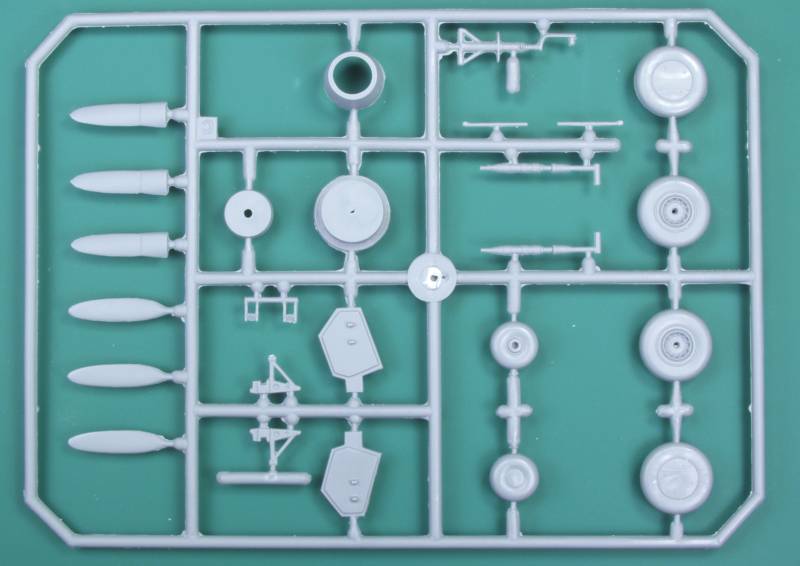
The resin parts are cast in a tan colored resin and are cleanly cast with no visible pin holes or short shots. The parts include cockpit floor, seat with molded on harness and belts, sides, rear bulkhead, control panels, stick and other cockpit details, nose and main gear wheel wells, intake radiators, nose gear doors and weighted wheels. Some of the casting blocks may present a challenge to remove. See photo below.
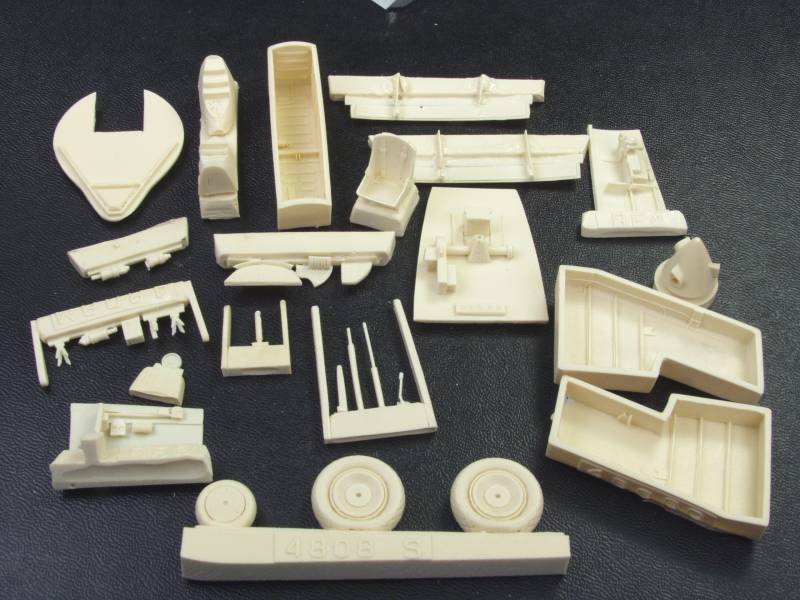
The clear parts are vacuformed, reasonably clear and in good shape considering they were loose in the box. The frame lines were distinct to aid in painting and two are supplied in case one comes to grief. See photo below.
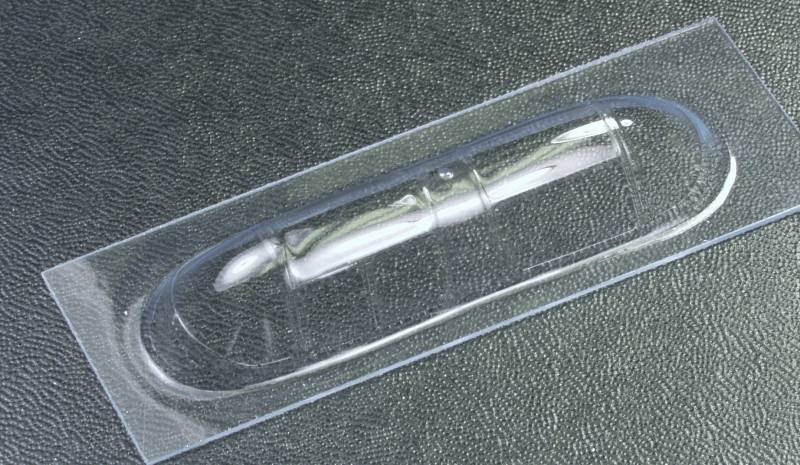
The decals are for one aircraft, the surviving second prototype. They are thin and in register and appear to be opaque. There is some white stenciling that does not show in the photo below.
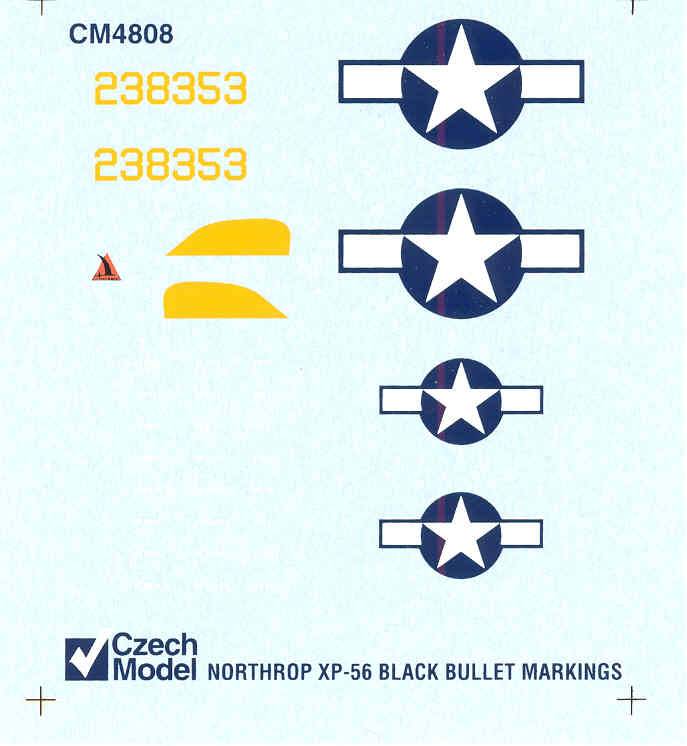
The instructions are printed on an 8 1/2" x 17" page printed on both sides and folded to create four pages. The first has history and a parts map, the next two are the assembly diagrams arranged in seven steps. The last page has profiles showing the location of the national markings and serial number and a paragraph detailing the colors used on the aircraft. There are no hints as to where to put the stencils. Most of them are the no step, don't push, lift here and that sort so I guess you can use logic to locate where most would go.
After Market Goodies
There are none that I'm aware of and there really isn't a need for any.
Conclusions
This is a reasonably nice kit for a short run kit. Most other reviews that I have read give it a pretty good score. As with most kits of this type some fit issues will be encountered and most of the time will be spent getting the resin parts to fit in the injected parts. Recommended to those with some experience in building short run kits.
Links to kit build or reviews
A build / review can be found here.
References
The Internet and the instruction sheet.